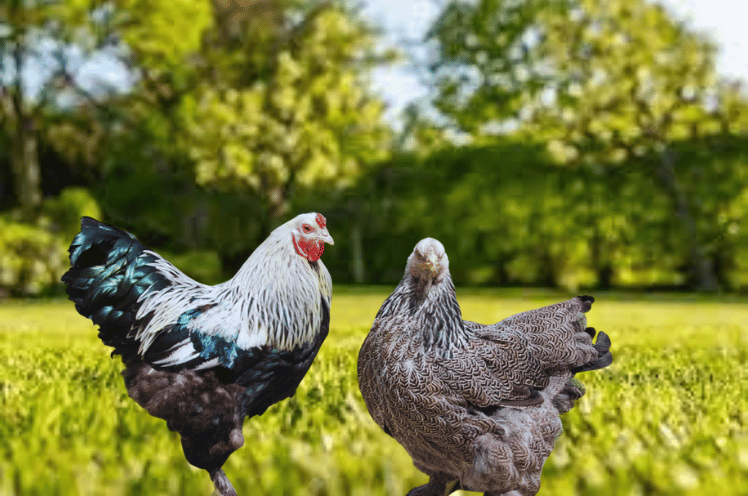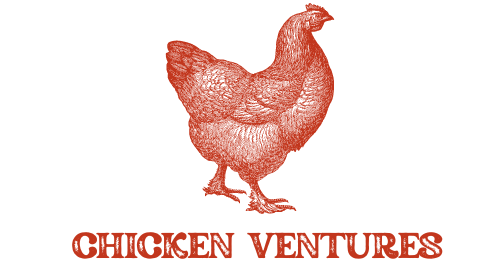Many people call Dark Brahma Chickens “The King of Chicken Poultry” because of their beautiful looks, huge size, and gentle stance. They are the best choice for anyone who loves chickens. In this blog, we’ll take a look into the world of Dark Brahma Chickens, talking about where they come from, how they look, what traits they have, how much care they need, and a lot more.
Because they are calm and gentle, these chickens make great pets and are easy to take care of. In hot and cold places, they can easily adapt to different weather. They eat like horses but aren’t picky about what they eat and can do well on a wide range of foods.
Their eggs are always big and brown, which shows that they are great layers. But you need to feed them a well-balanced meal with lots of nutrients to keep them healthy and help them work harder.
History of Dark Brahma Chickens
The Dark Brahma breed likely came to the US from China and India around 1840. From 1850 to 1890, they changed from big birds with feathered legs to smaller birds with feathered legs. The bird gets its name from the Indian river Brahmaputra.
Advantages Of Dark Brahma Chickens
The American chicken Dark Brahma will look great in your yard. That’s right, we can use this chicken for both egg production and meat production. When it comes to breeding, Dark Brahmas are known for being very broody.
Dark Brahma’s Dual-Purpose Breed
Dark Brahmas are a breed of chicken that can do two things. To breed them to be great at producing eggs and meat. When farmers and breeders want to keep a breed that can do more than one thing, they choose these birds. They give businesses a steady supply of eggs and good meat options. Their development is slow, and they only lay eggs in 8 to 9 months.
They are famous for being very big and having beautiful feathers that cover them. Their chests are wider and their bodies are larger. Other chicken types don’t look as good as their V-shaped bodies, which makes them a good choice for meat production. It takes this bird about twelve months to lay more than 200 eggs, which is a good rate for a bird this size. That’s four to five eggs a week. They are a great choice for people who want to raise chickens for meat and eggs.
Egg Production Of Dark Brahma Chickens
People think Dark Brahma chickens lay good brown eggs, especially in the winter when other types stop laying eggs because their feathers make them cold-resistant. They can lay between 200 and 220 big brown eggs a year, which is a good number for a breed that can do two things.
But compared to other small breeds, they take longer to grow up. They started laying eggs when they were about 8 to 9 months old. Other small breeds started laying eggs at 6 to 7 months old. They don’t lay as many eggs as some pure mix breeds, which are known as “egg machine breeds.”
Appearance Of Dark Brahma Chicken
Brahmas are very big. They look interesting and different because their black feathers have white lacing patterns on them.

Extra Large Size
Dark Brahma Chickens are Big and Gentle. Some people think that Brahmas are hard to keep and raise because they are so big, but they are good at both, laying brown eggs and meat. They are also known for being calm, gentle, and obedient, which makes them easy to handle and manage.
Brahma the dim Chickens grow at a different rate than most animals. At just 7 months old, they look huge, and their heavy feathering makes them more gentle giants with feathered legs. These chickens are 70% bigger than other breeds.
Size Of Dark Brahma Chickens
| Male | Up to 30 inches |
| Female | Up to 22 inches |
Colors Of Dark Brahma Chickens
There are only two types of Dark Brahma Chickens: white and black. They have hackle and saddle white feathers with fine black outline markings and a red pea comb. This color mix is awesome and makes them look better.
You can choose from three basic color schemes of Brahma for your chicken coop. From the formal colors of Light Brahma, Buff Brahma, and Dark Brahma come many other colors, such as Lavender Brahma, Gold Partridge Brahma, Black Brahma, White Brahma, and so on.
The American Poultry Association has set some American Standards of Perfection for these birds. These standards look at things like the plumes on their toes and shanks, the feathers that cover their feet and shanks, and their beautiful pea combs. A range of dark colors with thick, smooth feathering and thick down all over the body.
Eyes Of Dark Brahma Chickens
They have curled eyebrows on top of their eyes, which make them look mean and intimidating. They also have a big, broad head with a skull that sticks out over the eyes.
Dark Brahma Rooster vs Hen
The hens and roosters are easy to tell apart because they have unique markings. In roosters of this breed, the sale plumes have black lacing stripes around the edges. On the other hand, the hen’s plumes are dark grey with beautiful silver-penciled marks on the shoulder blades and main plume edges that are white lacing contrast.
Characteristics Of Dark Brahma Chickens
Dark-bred Brahmas are known for being big and beautiful, while feathered-footed chickens are known for having a nice look and being friendly.
- Impressive Structure
- Great Size
- Unique Color
- Good Egg Layers
- Heat Hardy
- Calm
- Meat Production
- Winter Hardy
- Little Pea Size Comb
Health Issues
Every time, Check Dark Brahma’s feet for hard balls and remove them if you find any. Mud balls are not only dirty but also very dangerous and can cause toenails to break and toes to curl.
Dark Brahma Chicks
Because they have feathers on their legs, these chicks stand out from other chicken types. When they hatch, they are a dark golden brown color. Giving them a lot of room lets them grow quickly. They are different from chicks of other kinds because of their size.
Prices may change based on a lot of things, such as supply, breeder, pure bloodline, and chicks’ ages. You can get it from Hatchery Meyer, Hatchery McMurray, Hatchery Hoovers, Hatchery Cackle, Hatchery Mt. Healthy Chase, and other places. A dark Brahma chick that is one day old costs between $5 and $20.
Chicken Coops
Brahma chickens are the best. They need a safe coop with lots of room. You need to know what they need before you keep them. First, they need big coops with at least 4 to 5 square feet of floor room for each breeder so they can run, play, and stretch out without much trouble. The design of the coop must be such that each meets its own needs and coop design.
Hens are popular because they lay eggs all year long, so their nest boxes should be 15x15x15. They need a healthy, stress-free place to live to grow quickly. Because they like sports, they need a lot of room to run around. They also always need water and shade.
Shady Area In Coop
They have thick feathers that make it easy for them to deal with heat stress in the summer. Giving Brahma chickens lots of shady spots in their coop is important for many reasons, such as keeping them cool in the summer and protecting them from high heat. For them to keep their shiny look and protect their feathers, shade is very important.
The feathers on their feet and bodies make them look more beautiful. However, small cages can hurt their bodies and feathered feet.
Fresh Water
Water is necessary for all living things to stay hydrated and healthy. Ensure they always have fresh water in their coop in a clean pot or tub. Based on what the experts say, you can add some multivitamins and fluids. Like all other chickens, Brahma needs a steady water source that is easy to access in their cage. This way, the chickens will never be thirsty.
Chickens can get stomach problems from drinking water that isn’t clean or clear. To prevent viruses and germs from growing, wash the water container with soap and clean it. Before making something, this method solves many problems.
Dark Brahma Rooster
The dark Brahma Rooster and the hen have very different looks. Roosters are usually black with bright silver spots, and hens are beautiful grey with silver spots. Their job is to fertilize the egg so that it can hatch. A Dark Brahma Rooster weighs between 12 and 16 pounds, and a Cockerel weighs between 10 and 12 pounds.
It is very quiet, beautiful, and friendly around roosters. The main job of the rooster is to produce meat. They are well-known for being big and producing meat. They watch over your group as it goes from being prey to being prey.
Light Brahma vs Dark Brahma
| Light Brahmas Chicken | Dark Brahma Chicken |
| Recognized in 1874 | Recognized in 1874 |
| Contrast in Black and White | Black Rooster and Dark grey hen |
| Meat Purpose | Egg Purpose |
| Heavier than dark | Lighter than Light Brahmas |

